#ancient egyptian economy
Explore tagged Tumblr posts
Text

The Ancient Egyptian economy was based on the breadst standard!𓏏
😄
#history#ancient egypt#bread#beer#economy#ancient history#egyptology#currency#pfs#baking value#ancient#food#ancient egyptian history#barter#banking#old kingdom#middle kingdom#new kingdom#late dynastic period#food history#ancient practices#ancient egyptians#baking#brewing#economic history#nickys facts
14 notes
·
View notes
Text

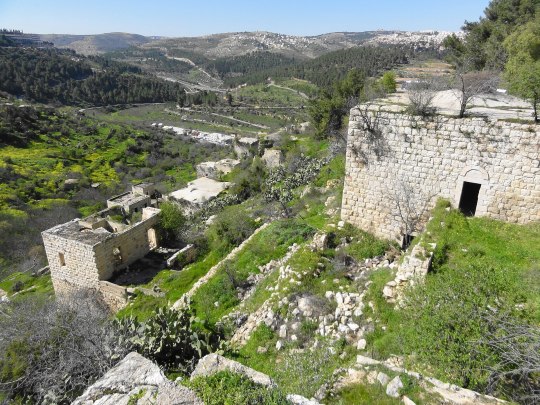
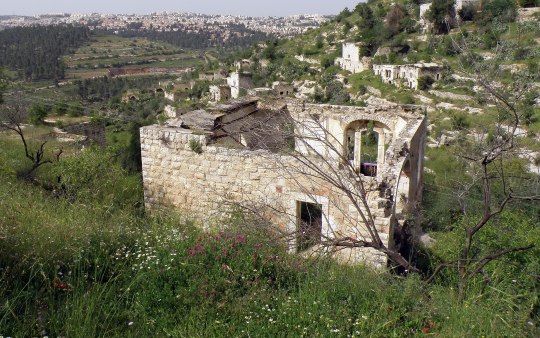

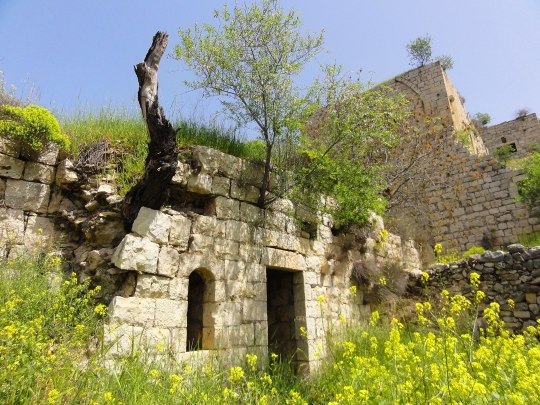
when the homes in the depopulated palestinian village of lifta were originally built is impossible to tell and most likely varies from house to house. the area's been known since ancient times, including having been written about in the hebrew bible. it's retained multiple different names throughout history - lifta by romans, nephto by byzantines, clepsta by crusaders, then lifta again by arabs. in more recent times, the area saw battle in the early 19th century, when it saw a peasant's revolt against egyptian conscription and taxation policies. (egyptian-ottoman ruler muhammad ali had attempted to become independent from the ottoman empire, and sought to use the area of "greater syria" which palestine was apart of as a buffer state.)
the village was predominantly muslim with a mosque, a maqām for local sage shaykh badr, a few shops, a social club, two coffee houses, and an elementary school which opened in 1945. its economy was based in farming - being a village of jerusalem, farmers would sell their produce in the city's markets. an olive press which remains in the village gives evidence to one of the most important crops its residents farmed. the historically wealthy village was known for its intricate embroidery and sewing, particularly of thob ghabani bridal dresses, which attracted buyers from across the levant.
lifta also represents one of the few palestinian villages in which the structures weren't totally or mostly decimated during the 1948 nakba. 60 of the 450 original houses remain intact. from zochrot's entry on lifta:

israel's absentee property law of 1950 permits the state to expropriate land and assets left behind, and denies palestinians the right to return to old homes or to reclaim their property. it's estimated that there's around 400,000 descendants of the village's original refugee population dispersed in east jerusalem, the west bank, jordan, and the palestinian diaspora.
like many depopulated palestinian houses, some of those in lifta were initially used to settle predominantly mizrahi immigrants and refugees, in this case 300 jewish families from yemen and kurdistan. the houses weren't registered in their names, and the area generally saw poor infrastructure and no resources including water and electricity provided by the government. most left in the early 1970s as a part of a compensation program to move out people who'd been settled in depopulated palestinian houses - if they didn't, they were referred to as "squatters" and evicted. (holes were even drilled in the roofs of evacuated buildings to make them less habitable). the 13 families which remain there today only managed to do so because they lived close to the edge of the village.
in 1987, the israeli nature reserves authority planned to restore the "long-abandoned village" and turn it into a natural history center which would "stress the jewish roots of the site", but nothing came of it. several more government proposals on what to do with the land had been brought up since then. this culminated in in 2021 when the israel land administration announced without informing the jerusalem municipal authorities that it issued a tender for the construction of a luxury neighborhood on the village's ruins, consisting of 259 villas, a hotel, and a mall. since 2023, they've agreed to shelve and "rethink" these plans after widespread objection.
the reasons for the objections varied significantly between the opposing israeli politicians - who see the village as an exemplar of cultural heritage and "frozen in time" model of palestinian villages before 1948 - and palestinians - who largely see the village as a witness of the nakba and a symbol of hope for their return. lifta is currently listed by unesco as a potential world heritage site, a designation netanyahu has threatened to remove several times.
many palestinians who are descendent from its former residents still live nearby. like with many other depopulated palestinian villages, they've never ceased to visit, organize tours of the village, and advocate for its preservation.
#palestine#info#nakba#my posts#the dresses link isnt specific to lifta thobs but provides a good overview#i couldn't find anything online abt lifta's embroidery but some of the book pdfs on palestinian costume i reblogged a while ago have info
408 notes
·
View notes
Text
(I probably only do this with cards I like in the future)
It is part 2 of Juno L Card, here is the original video: https://www.youtube.com/watch?v=K6e7GQxiTuY&rco=1 (credit to @shyanimeboi on X)
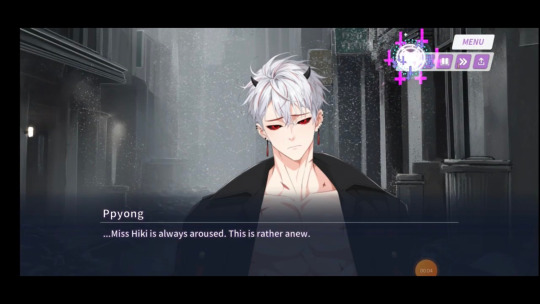
... I feel like I'm being accused of something I'm not. Defamatory, slander, the audacity of this guy
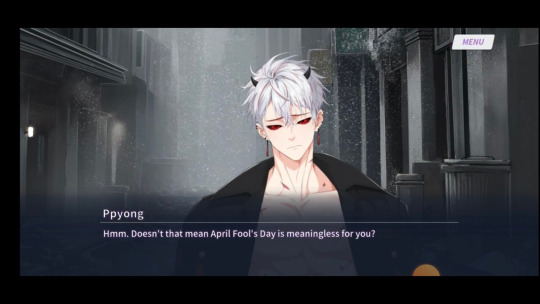
This is lore-accurate MC BUT STILL, how dare-
I wouldn't mind being a cat for a day you know, so I just lounge around wherever and being treated like those ancient royal Egyptian's cats is a must.

Oh?

Okay Juno, didn't know you could have the green tea energy but keep cooking

This is where I got the feeling that his fans must be watching somewhere behind the rubble like I just got that gut feeling they're watching and having ovaries overload or combusting on the spot right now
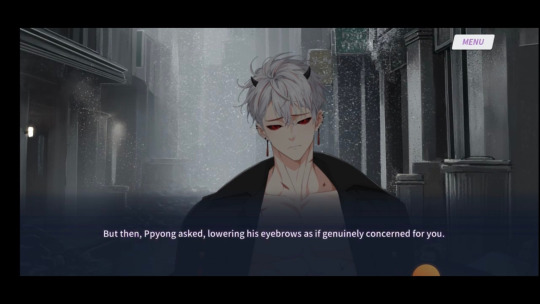

I almost believed him BUT THEN
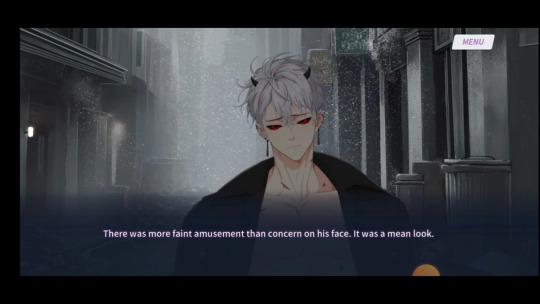
HE REALLY GOING MEAN GIRL ON ME
If I were MC I would poke his eyes- Cause ain't no way you saying that to me with that face boy

So he DOES have mean girl energy in him. I like it, to observe it, but he better not use it on me because I will not take him seriously if he wants intimacy later, I'm not built like that

Yeah, dude what ya think??? I have a job and a house on there, unfortunately an achievement in this economy (I remember MC still has a house, they just chose to stay with Minhyeok because they didn't want to be in a space where their parents died, which is valid)

So his regular head tilting as a red chewing gum is actually mean it like this??? Damn ok-

I can't believe they have Satan and Gehenna making a move with Minhyeok before MC.
I still didn't forgive Satan for kissing Minhyeok before MC could

Sir????


Ignoring Ppyong's being a smug little bastard, it is actually really nice that they show how close MC is with Minhyeok and how much they care for each other. If they don't get together, it's fine by me, at least let them be platonic soulmates.

??? How much time did you spend time with Minhyeok on Earth? Either Minhyeok's scent was mad strong and lingered easily or they had been all over each other-

I KNOW IT IS HIM! Tell me how you got his scent on you! Spill the tea sis!

What?


Wait-wait-wait they actually serious?!

Excuse me, how the hell do you think I can do it??? Ya'll devils must be having some goofy as-hell imagination if you think I can do it
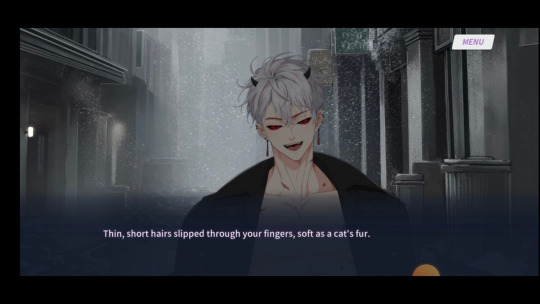
Oooh more detail to take note on
So anyway, they end up touching each other and live up to his kink, because they are be TOUCHING. And there are some details of how Minhyeok and MC used to touch and caress each other heads and how MC feels at ease just by the familiarity of it which is really really cute (இ‸இ`。)
I am actually surprised how I got a lot of Juno's personality spot on in my two fics of him and he is already my favorite, but I like him a lot more now that we got to know him more than just a silly little red dough.
Please watch the rest in Hiki's (@shyanimeboi) YouTube video that I write down at the top (they're the actual angel here) and thank you for listening to me ramble, I will do this again once Minhyeok, Paimon, and Selaphiel L cards come out... But if they got the same paywall treatment then I might open my wallet if I really like it.
165 notes
·
View notes
Photo
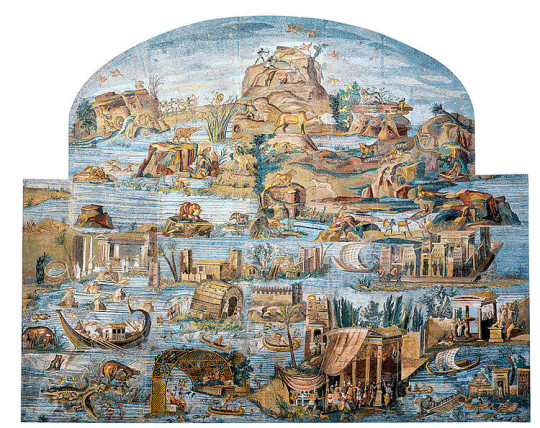
The Economy of Ptolemaic Egypt
Ptolemaic Egypt rapidly established itself as an economic powerhouse of the ancient world at the end of the 4th century BCE. The wealth of Egypt was owed in large part to the unrivalled fertility of the Nile, which served as the breadbasket of the Ptolemaic Kingdom. Egypt's economy underwent numerous radical changes during the Ptolemaic period, including the introduction of Egypt's first official coinage, the cultivation of new crops, and the growth of international trade. Corrupt bureaucratic practices, droughts, military expenditures, and political unrest plagued the economy of the Ptolemaic dynasty as the kingdom went into a period of decline in the 2nd century BCE. Nevertheless, Ptolemaic Egypt remained one of the largest economies in the Mediterranean until the Roman conquest of Egypt in 30 BCE.
Managing the Egyptian economy
Instead of uprooting Egyptian tradition, the Ptolemaic dynasty incorporated pre-existing administrative practices when they assumed control of Egypt in the late 4th century BCE. Ptolemy II Philadelphus (c. 285 BCE – 246 BCE) laid the foundation of Ptolemaic economic policies by introducing new revenue and property laws and new taxes. Ptolemy II also began the distribution of 'instruction texts' describing ideal governmental behaviour to officials as an attempt to create some kind of bureaucratic standard.
The chief economic minister in Ptolemaic Egypt was the dioiketes, who was appointed by the ruling monarch to set Egypt's economic policies. All of the offices dealing with finances, agriculture, and record-keeping were under his auspices. As a matter of practicality, ancient Egypt was divided into administrative provinces known as nomes. At the nome level, officials dealt with municipal and village authorities to handle economic issues like land management, taxation, and the circulation of currency.
On the surface, Ptolemaic Egypt appears to be a highly organised bureaucracy, which early modern historians characterised as the product of a highly centralised despotic state. The Ptolemaic crown may have directed economic policies but these could only be enforced by local authorities who sought to increase their own power and prestige. To complicate the issue, the Ptolemaic government lacked a clear chain of command, and areas of responsibility frequently overlapped. The independent initiative of farmers and merchants should also not be discounted. The economy of Ptolemaic Egypt was therefore never the product of state-direction, but the result of overlapping fiscal, agricultural, and social influences. Sitta Von Reden in The Ancient Economy and Ptolemaic Egypt concisely summed this up
The transformation of a system into one based on coinage and contract, however, was not achieved by force or centralisation as previous scholars have argued; rather, it was a system carefully devised as a balance of state and local power, royal patronage and private initiative, as well as indigenous agrarian patterns and Greek innovation. (175)
Corruption plagued all levels of government and gave way to predatory bureaucratic practices. This condition persisted in spite of royal decrees forbidding the financial exploitation of Ptolemaic subjects by officials. As a result of the broken fiscal system, Ptolemaic rulers frequently began their reigns by providing blanket forgiveness on all debts owed to the government to help undo past damage from state corruption.
From the 3rd century BCE onwards, social and economic inequality caused uprisings and civil unrest, which further strained the Egyptian economy. The largest uprising occurred between 205 BCE and 185 BCE when Upper Egypt temporarily seceded from the Ptolemaic Kingdom with Nubian support. Upper Egypt was reconquered during the reign of Ptolemy V (204 BCE – c. 180 BCE), but the effects of this insurrection rocked Egypt and prompted the Ptolemaic dynasty to reform many aspects of its rule.
Continue reading...
44 notes
·
View notes
Text
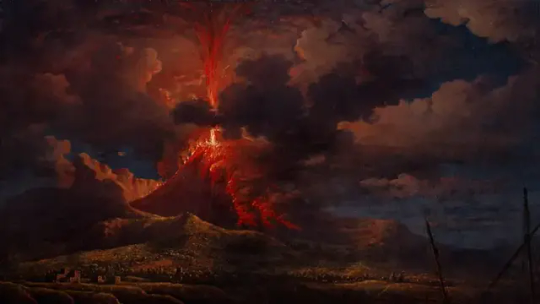
More than 200 Survivors of Mount Vesuvius Eruption Discovered in Ancient Roman Records
After Mount Vesuvius erupted, survivors from the Roman cities of Pompeii and Herculaneum fled, starting new lives elsewhere.
On Aug. 24, in A.D. 79, Mount Vesuvius erupted, shooting over 3 cubic miles of debris up to 20 miles (32.1 kilometers) in the air. As the ash and rock fell to Earth, it buried the ancient cities of Pompeii and Herculaneum.
According to most modern accounts, the story pretty much ends there: Both cities were wiped out, their people frozen in time.
It only picks up with the rediscovery of the cities and the excavations that started in earnest in the 1740s.
But recent research has shifted the narrative. The story of the eruption of Mount Vesuvius is no longer one about annihilation; it also includes the stories of those who survived the eruption and went on to rebuild their lives.
The search for survivors and their stories has dominated the past decade of my archaeological fieldwork, as I’ve tried to figure out who might have escaped the eruption. Some of my findings are featured in an episode of the new PBS documentary, “Pompeii: The New Dig.”
Making it out alive:
Pompeii and Herculaneum were two wealthy cities on the coast of Italy just south of Naples. Pompeii was a community of about 30,000 people that hosted thriving industry and active political and financial networks. Herculaneum, with a population of about 5,000, had an active fishing fleet and a number of marble workshops. Both economies supported the villas of wealthy Romans in the surrounding countryside.
In popular culture, the eruption is usually depicted as an apocalyptic event with no survivors: In episodes of the TV series “Doctor Who” and “Loki,” everyone in Pompeii and Herculaneum dies.
But the evidence that people could have escaped was always there.
The eruption itself continued for over 18 hours. The human remains found in each city account for only a fraction of their populations, and many objects you might have expected to have remained and be preserved in ash are missing: Carts and horses are gone from stables, ships missing from docks, and strongboxes cleaned out of money and jewelry.
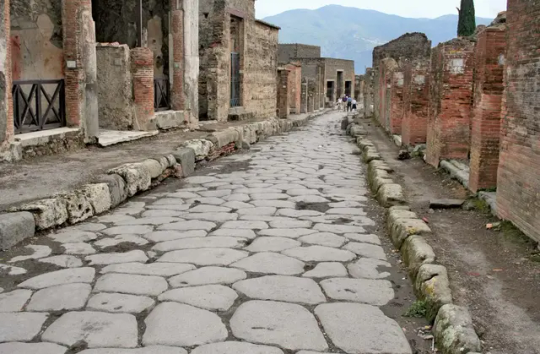
All of this suggests that many – if not most – of the people in the cities could have escaped if they fled early enough.
Some archaeologists have always assumed that some people escaped. But searching for them has never been a priority.
So I created a methodology to determine if survivors could be found. I took Roman names unique to Pompeii or Herculaneum – such as Numerius Popidius and Aulus Umbricius – and searched for people with those names who lived in surrounding communities in the period after the eruption. I also looked for additional evidence, such as improved infrastructure in neighboring communities to accommodate migrants.
After eight years of scouring databases of tens of thousands of Roman inscriptions on places ranging from walls to tombstones, I found evidence of over 200 survivors in 12 cities. These municipalities are primarily in the general area of Pompeii. But they tended to be north of Mount Vesuvius, outside the zone of the greatest destruction.
It seems as though most survivors stayed as close as they could to Pompeii. They preferred to settle with other survivors, and they relied on social and economic networks from their original cities as they resettled.
Some migrants prosper:
Some of the families that escaped apparently went on to thrive in their new communities.
The Caltilius family resettled in Ostia – what was then a major port city to the north of Pompeii, 18 miles from Rome. There, they founded a temple to the Egyptian deity Serapis. Serapis, who wore a basket of grain on his head to symbolize the bounty of the earth, was popular in harbor cities like Ostia dominated by the grain trade. Those cities also built a grand, expensive tomb complex decorated with inscriptions and large portraits of family members.
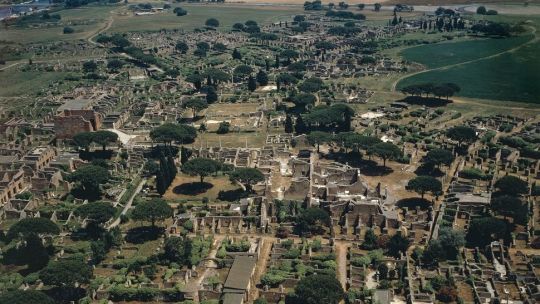
Members of the Caltilius family married into another family of escapees, the Munatiuses. Together, they created a wealthy, successful extended family.
The second-busiest port city in Roman Italy, Puteoli – what’s known as Pozzuoli today – also welcomed survivors from Pompeii. The family of Aulus Umbricius, who was a merchant of garum, a popular fermented fish sauce, resettled there. After reviving the family garum business, Aulus and his wife named their first child born in their adopted city Puteolanus, or “the Puteolanean.”
Others fall on hard times:
Not all the survivors of the eruption were wealthy or went on to find success in their new communities. Some had already been poor to begin with. Others seemed to have lost their family fortunes, perhaps in the eruption itself.
Fabia Secundina from Pompeii – apparently named for her grandfather, a wealthy wine merchant – also ended up in Puteoli. There, she married a gladiator, Aquarius the retiarius, who died at the age of 25, leaving her in dire financial straits.

Three other very poor families from Pompeii – the Avianii, Atilii and Masuri families – survived and settled in a small, poorer community called Nuceria, which goes by Nocera today and is about 10 miles (16.1 kilometers) east of Pompeii.
According to a tombstone that still exists, the Masuri family took in a boy named Avianius Felicio as a foster son. Notably, in the 160 years of Roman Pompeii, there was no evidence of any foster children, and extended families usually took in orphaned children. For this reason, it’s likely that Felicio didn’t have any surviving family members.
This small example illustrates the larger pattern of the generosity of migrants – even impoverished ones – toward other survivors and their new communities. They didn’t just take care of each other; they also donated to the religious and civic institutions of their new homes.
For example, the Vibidia family had lived in Herculaneum. Before it was destroyed by the eruption of Vesuvius, they had given lavishly to help fund various institutions, including a new temple of Venus, the Roman goddess of love, beauty and fertility.
One female family member who survived the eruption appears to have continued the family’s tradition: Once settled in her new community, Beneventum, she donated a very small, poorly made altar to Venus on public land given by the local city council.
How would survivors be treated today?
While the survivors resettled and built lives in their new communities, government played a role as well.
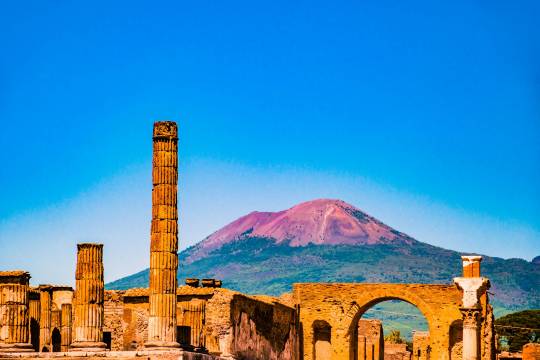
The emperors in Rome invested heavily in the region, rebuilding properties damaged by the eruption and building new infrastructure for displaced populations, including roads, water systems, amphitheaters and temples.
This model for post-disaster recovery can be a lesson for today. The costs of funding the recovery never seems to have been debated. Survivors were not isolated into camps, nor were they forced to live indefinitely in tent cities. There’s no evidence that they encountered discrimination in their new communities.
Instead, all signs indicate that communities welcomed the survivors. Many of them went on to open their own businesses and hold positions in local governments. And the government responded by ensuring that the new populations and their communities had the resources and infrastructure to rebuild their lives.
By Steven L. Tuck.
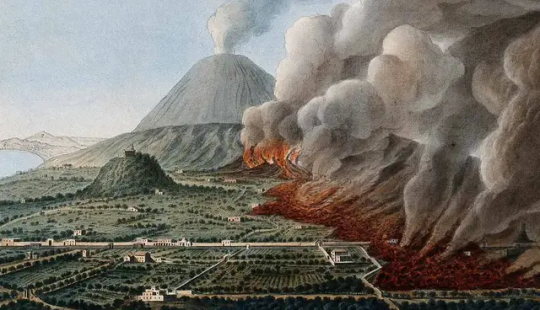
#More than 200 Survivors of Mount Vesuvius Eruption Discovered in Ancient Roman Records#Pompeii#Herculaneum#Mount Vesuvius#ancient artifacts#archeology#archeolgst#history#history news#ancient history#ancient culture#ancient civilizations#roman history#roman empire#long post#long reads
60 notes
·
View notes
Text
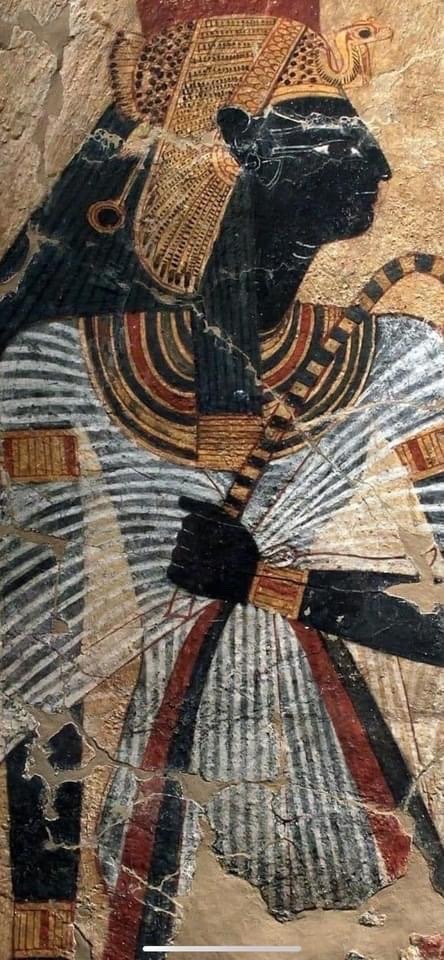

AHMOSE NEFERTARI (Grandmother of Hatshepsut)
Ahmose Nefertari x Miss South Sudan
Ahmose-Nefertari was the first Great Royal Wife of the 18th Dynasty of Ancient Egypt…
She was a daughter of Seqenenre Tao and Ahhotep I, and royal sister and wife to Ahmose I…
Her son Amenhotep I became pharaoh and she may have served as his regent when he was young…
“The Tarifian, Badarian and Tasian cultures of Middle and Upper Egypt have strong ties with the Nubian/Nilotic pastoral tradition, as can be inferred, for instance, by the very similar pottery, economy and settlement pattern and by the latest findings in the deserts surrounding the Egyptian Nile valley” (Gatto 2011b, 2012a, b, 2013)
SOURCE;
(Prehistory and Protohistory of Ancient Civilizations; 2015)
In other words, Predynastic Ancient Egyptians (4500 B.C.— 3100 B.C.) are more closely related to Nubian / Nilotic peoples…
The Nilotic peoples are people indigenous to the Nile Valley who speak Nilotic languages…
They inhabit South Sudan, Sudan, Egypt, Ethiopia, Uganda, Kenya, the Democratic Republic of the Congo, Rwanda, Burundi and Tanzania…
Among these are the Burun-speaking peoples, Karo peoples, Luo peoples, Ateker peoples, Kalenjin peoples, Datooga, Dinka, Nuer, Atwot, Lotuko, and the Maa-speaking peoples…
Nubians / Nilotic peoples are the ORIGINAL inhabitants of ancient Kemet…
These are the ORIGINAL founders…
27 notes
·
View notes
Text
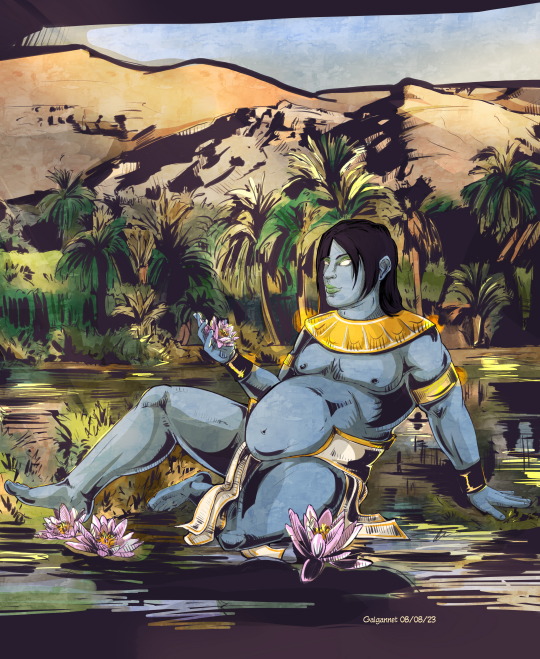
Lord Hapi (God of the Nile)
Hapi, the Egyptian god of fertility, water and associated with the rich black mud called silt, featured in the stories, myths and legends in Egyptian Mythology. Hapi was believed to live in caves near the Nile cataract (white water rapids) which was on the border between Egypt and Nubia. The economy of ancient Egypt relied on its agricultural wealth and, therefore, on the River Nile. Every year a torrent of water overflowed on to the banks of the River Nile leaving a thick rich mud (called black silt) and alluvial soil that fertilized the land. The Nile god Hapi was believed to bring the silt to the banks of the Nile, making farming possible surrounding the banks of the River Nile, an otherwise desert region. Artstation | Deviantart | VK | Commission List
#NoAI#Ancient Egypt#gods of egypt#Egyptian gods#Hapi (Nile god)#Hapi#Digital 2D#Nile god#Illustration#comic book style#comic art#comic style
59 notes
·
View notes
Text
๋࣭ ⭑⚝ The Rise and Fall of Ancient Egyptian Civilization๋࣭ ⭑⚝

hey guys im back AND late but here was a very long and slightly complicated one enjoy :D

Ancient Egypt, one of the most iconic civilizations in history, thrived for over three millennia, leaving an indelible mark on human culture, art, and governance. Its history is a tapestry of great achievements and inevitable decline, shaped by its geographic advantages, complex social structure, and interactions with neighboring powers.
The Geographic Foundation of Egyptian Civilization
The Nile River was the foundation of Ancient Egypt's prosperity. Flowing northward through an arid desert, the Nile created a fertile strip of land that was ideal for agriculture. The river's annual inundation deposited nutrient-rich silt onto the land, enabling the Egyptians to grow abundant crops, which in turn supported a growing population and the development of a complex society.
Geography played a crucial role in the development of a unified Egyptian state. The Nile served as a natural highway, facilitating communication and trade between Upper and Lower Egypt. This unity was essential for the centralized control that characterized Ancient Egyptian governance. Moreover, the deserts to the east and west, and the cataracts of the Nile to the south, provided natural barriers that protected Egypt from invasions, allowing the civilization to flourish relatively undisturbed by external threats.
The Unification of Egypt and the Early Dynastic Period
Around 3100 BCE, King Narmer (often identified as Menes) achieved the unification of Upper and Lower Egypt, marking the beginning of the Early Dynastic Period (c. 3100–2686 BCE). This unification was a critical moment in Egyptian history, laying the groundwork for the centralized state that would dominate the region for centuries.
During this period, the pharaoh emerged as both a political and religious leader, considered a divine ruler responsible for maintaining Ma'at, the cosmic order. The early pharaohs established a bureaucratic system that allowed them to administer the state efficiently, collect taxes, and organize large-scale construction projects. The development of hieroglyphic writing during this time enabled the recording of official decrees, religious texts, and monumental inscriptions, further solidifying the authority of the pharaohs.
The Old Kingdom: The Age of the Pyramids
The Old Kingdom (c. 2686–2181 BCE), often referred to as the "Age of the Pyramids," saw the construction of some of the most enduring symbols of Ancient Egypt. The most famous of these is the Great Pyramid of Giza, built during the reign of Pharaoh Khufu (c. 2589–2566 BCE). This period was characterized by the centralization of power in the hands of the pharaoh, who was regarded as a living god responsible for the well-being of the state.
The economy of the Old Kingdom was based on a redistributive system, where the surplus from agriculture was collected by the state and used to fund massive construction projects, support the bureaucracy, and maintain the military. This system allowed the pharaohs to command vast resources, which were used to build monumental structures that symbolized their divine authority and ensured their legacy.
However, the immense resources required for these projects eventually strained the economy. By the end of the Sixth Dynasty, around 2181 BCE, the centralized power of the pharaohs began to decline. Low Nile floods, combined with the growing power of regional governors (nomarchs), led to a weakening of central authority and the collapse of the Old Kingdom, ushering in the First Intermediate Period.
The First Intermediate Period: A Time of Fragmentation
The First Intermediate Period (c. 2181–2055 BCE) was marked by political fragmentation and social instability. With the collapse of the Old Kingdom, Egypt split into several smaller, competing regions, each ruled by local leaders. This period is often described as a "dark age" in Egyptian history, characterized by a decline in monumental building, cultural achievements, and central authority.
Despite the challenges of this period, the resilience of Egyptian society eventually led to the reunification of the country. The rulers of Thebes, in Upper Egypt, gradually gained power and, by the end of the Eleventh Dynasty, succeeded in reuniting Egypt under the leadership of Pharaoh Mentuhotep II. This marked the beginning of the Middle Kingdom, a period of renewed stability and prosperity.
The Middle Kingdom: A Period of Renewal
The Middle Kingdom (c. 2055–1650 BCE) is often regarded as a renaissance period in Egyptian history. The pharaohs of the Middle Kingdom focused on consolidating their power, reforming the administration, and expanding Egypt's influence beyond its traditional borders.
One of the most significant achievements of the Middle Kingdom was the expansion of Egypt's borders into Nubia, a region rich in gold and other valuable resources. The Egyptians established a series of fortresses along the Nile in Nubia, securing control over the region and ensuring a steady supply of resources for the state. The Middle Kingdom also saw increased trade with the Levant and other regions, bringing in goods such as cedarwood, lapis lazuli, and silver.
The literature of the Middle Kingdom reflects a more introspective and realistic view of life compared to the Old Kingdom. Works such as the "Tale of Sinuhe" and the "Instructions of Amenemhat" emphasize themes of loyalty, morality, and the responsibilities of the pharaoh to his people. The concept of Ma'at continued to be central to Egyptian thought, but there was also a growing recognition of the complexities and challenges of maintaining order in the world.
The Middle Kingdom pharaohs undertook large-scale irrigation projects to improve agricultural productivity and prevent the famine that had plagued the late Old Kingdom. These projects included the construction of canals and reservoirs to control the Nile's flooding and to ensure a stable water supply for agriculture. The increased agricultural productivity contributed to the prosperity of the Middle Kingdom and supported the growth of a more complex and stratified society.
The Second Intermediate Period and the Rise of the New Kingdom
The decline of the Middle Kingdom led to the Second Intermediate Period (c. 1650–1550 BCE), a time of political instability and foreign invasions. The Hyksos, a group of Asiatic people, established themselves as rulers in Lower Egypt, introducing new technologies such as the horse-drawn chariot and composite bow. Meanwhile, native Egyptian rulers maintained power in Thebes, leading to a divided Egypt.
Eventually, the Theban rulers mounted a successful campaign to expel the Hyksos, leading to the reunification of Egypt under Ahmose I and the beginning of the New Kingdom (c. 1550–1070 BCE). This period is often referred to as the "Empire Period" due to Egypt's expansion and dominance over neighboring regions, including Nubia, the Levant, and parts of the Near East.
The New Kingdom pharaohs, such as Thutmose III, Hatshepsut, and Ramses II, expanded Egypt's borders through military campaigns and diplomatic alliances. The empire's wealth was further bolstered by tribute from conquered territories and extensive trade networks. The period also saw a resurgence in monumental building projects, with the construction of massive temples, such as those at Karnak and Luxor, and the rock-cut temples at Abu Simbel.
Religion played a central role in the New Kingdom, with the pharaohs increasingly emphasizing their divine status and their connection to the gods. The worship of the sun god Amun-Ra became particularly prominent, and the pharaohs were often depicted as the "son of Ra," chosen to rule by divine mandate. The New Kingdom also saw the rise of the powerful priesthood of Amun, which would later become a significant political force in its own right.
However, the immense costs of maintaining an empire, both in terms of resources and military commitments, gradually weakened the state. The death of Ramses II in 1213 BCE marked the beginning of a slow decline, as his successors struggled to maintain the empire's vast territories. Internal strife, including power struggles among the nobility and challenges to the authority of the pharaoh, further destabilized the kingdom.
The Decline and Fall of Ancient Egypt
The decline of Egypt accelerated during the Third Intermediate Period (c. 1070–664 BCE), a time characterized by political fragmentation and foreign invasions. The once-unified kingdom split into multiple smaller states, with the Libyans and Nubians establishing their own dynasties in different regions of Egypt. The arrival of the Sea Peoples, a confederation of naval raiders who caused widespread destruction throughout the Eastern Mediterranean, further strained Egypt's resources and military capabilities.
Despite these challenges, Egypt experienced a brief resurgence during the Late Period (c. 664–332 BCE) under the Saite dynasty, particularly under Pharaoh Psamtik I, who reasserted control over the country and repelled foreign invaders. The Saites focused on reviving the cultural and religious traditions of the past, as well as rebuilding the country's economy. However, this revival was short-lived, as Egypt was increasingly drawn into the conflicts of the larger Mediterranean world.
In 525 BCE, Egypt was conquered by the Persian Empire under Cambyses II, becoming a satrapy within the larger Achaemenid Empire. Although Egypt regained its independence briefly during the 28th to 30th Dynasties, it was finally and irrevocably absorbed into the Macedonian Empire following the conquest by Alexander the Great in 332 BCE. The subsequent Ptolemaic Period (305–30 BCE) represented a fusion of Greek and Egyptian cultures, but it was clear that the era of native Egyptian rule had come to an end.
The death of Cleopatra VII in 30 BCE and the annexation of Egypt by the Roman Empire marked the final chapter in the long and storied history of ancient Egyptian civilization. The fall of Egypt was not simply the result of external conquest, but also the culmination of centuries of internal decay, economic decline, and the gradual loss of autonomy in the face of rising foreign powers.
The rise and fall of ancient Egypt is a testament to the complex interplay of geography, governance, culture, and external forces in shaping the destiny of a civilization. From its origins along the life-giving Nile to its zenith as a powerful empire and its eventual decline, Egypt's history offers valuable insights into the factors that sustain and undermine civilizations. The legacy of ancient Egypt, preserved in its monuments, art, and written records, continues to influence and inspire the modern world. The civilization's story serves as both a cautionary tale and a reminder of the enduring achievements of human ingenuity and resilience.

guys i get my gcse results on thursday help
#history#dark aesthetic#dark academia#literature#egypt#ancient egypt#egyptian#egyptology#egypt tours#ancient history
9 notes
·
View notes
Text








Yet throughout these lean years, Wheatley Peters continued to write and publish her poems and to maintain, though on a much more limited scale, her international correspondence. She also felt that despite the poor economy, her American audience and certainly her evangelical friends would support a second volume of poetry.

Phillis Wheatley Peters died, uncared for and alone. As Richmond concludes, with ample evidence, when she died on December 5, 1784, John Peters was incarcerated, "forced to relieve himself of debt by an imprisonment in the county jail." Their last surviving child died in time to be buried with his mother, and, as Odell recalled, "A grandniece of Phillis' benefactress, passing up Court Street, met the funeral of an adult and a child: a bystander informed her that they were bearing Phillis Wheatley to that silent mansion."
Recent scholarship shows that Wheatley Peters wrote perhaps 145 poems (most of which would have been published if the encouragers she begged for had come forth to support the second volume), but this artistic heritage is now lost, probably abandoned during Peters's quest for subsistence after her death. Of the numerous letters she wrote to national and international political and religious leaders, some two dozen notes and letters are extant. As an exhibition of African intelligence, exploitable by members of the enlightenment movement, by evangelical Christians, and by other abolitionists, she was perhaps recognized even more in England and Europe than America.
Early 20th century critics of Black American literature were not very kind to Wheatley Peters because of her supposed lack of concern about slavery. She, however, did have a statement to make about the institution of slavery, and she made it to the most influential segment of 18th-century society - the institutional church. Two of the greatest influences on Phillis Wheatley Peter's thought and poetry were the Bible and 18th-century evangelical Christianity; but until fairly recently her critics did not consider her use of biblical allusion nor its symbolic application as a statement against slavery. She often spoke in explicit biblical language designed to move church members to decisive action. For instance, these bold lines in her poetic eulogy to General David Wooster castigate patriots who confess Christianity yet oppress her people:

And in an outspoken letter to the Reverend Samson Occom, written after Wheatley Peters was free and published repeatedly in Boston newspapers in 1774, she equates American slaveholding to that of pagan Egypt in ancient times: "Otherwise, perhaps, the Israelites had been less solicitous for their Freedom from Egyptian Slavery:
"I don't say they would have been contented without it, by no Means, for in every human Breast, God has implanted a Principle, which we call Love of freedom; it is impatient of Oppression, and pants for Deliverance; and by the Leave of our modern Egyptians I will assert that the same Principle lives in us."
Phillis died at the age of 31.
10 notes
·
View notes
Text
Incorrect History; Crystals
Everything that you’ve ever known about crystals is wrong. The simple yet elegant rocks that ties us mere mortals to the world’s fertile soil. You’ve probably searched up many times which stone correlates to when you were born. Aries’ pressurized diamonds to Pisces’ aquamarine. One used for stress relief, the other stimulating creativity. Looking at them, you wouldn’t think about the many wars and political conflicts they’ve played a role in. Thus I believe it’s time we stepped back and got an even clearer reflection of crystals. That is if you pray to not lose your coveted gems.
The intro reel plays, the text on screen reading ‘Factually True and Real History with Ted Nivison.’ A few images cascade behind the text, one being of the painting Girl with a Pearl Earring, while it gradually scales in size. Now you see Ted standing in front of a grassy knoll, you can assume it’s a green screen as it looks akin to Microsoft’s home screen.
Most would believe that the first big boom for crystals was New Age mysticism that arose in the 1980s but in actuality, they’ve been around since Ancient Egyptian. A ‘mini me’ form of Ted standing in the original’s hand. This revelation came with the discovery of clay tablets with magic formulas inscribed in hieroglyphics. Because this might come as a surprise to most of you, they did not have Staples. A picture of Staples green-screened, the smaller Ted becoming aware of larger Ted. That kinda blew my mind when I found out. What the fuck? The mini Ted disappeared now. The Parthenos now set behind them.
Most of what we know regarding crystals comes from the Ancient Greeks. The word crystal derives from the word cryo. Before battle, Greek soldiers would rub hematite on themselves. Oxidation gives the crystal it’s pristine rusted color, closely associating it with Ares, their god of war. One such battle being the Trojan war, historians claim it was over the prized Helen of Troy but this is incorrect. Paris of Troy stealing her from her husband, Sparta’s king. A clip of the film 300’s protagonist yelling Sparta appears on screen. Rather it was what Helen possessed, a coveted amethyst necklace. The war itself almost destroyed the economy, allowing for the Romans to easily take over the omega filled population destitute of alphas. And the amethyst necklace unfortunately lost to time.
Now let’s talk about the Victorians. A flash of puffy powdered wigs appearing on screen, different pieces of clothing; petticoats, feathered hats, waistcoat pockets holding watches. In 1829, Sir Boris Peel established London’s Metropolitan police force. They quickly garnered a corrupt reputation, referred to as spokes, cracking down on jewelry related robberies. Opals, rubies, & pearls most sought after. Women took to sewing them into their clothes, secret pockets when women’s clothing still had them. Further incorporating them into spring bonnets men on the hands of their watches. As tradition, peer pressure from the deceased goes, this is where aristocratic families willing beloved heirlooms to their descendants originated. As they later traveled to the adventurous new-beginnings of the Colonies, so did these possessions.
The east coast having settled, needing more room to stretch their legs, these ambitious settlers journeyed out west finding specks of gold in the Rocky mountains. They kept part of their finds separate, off the record. Only setting up shop after the glorious centers of attention turned to dust, haunted by their lustrous ghosts. Developing the tricks of the trade, mentoring others under their careful thumb. Hitting the 1980s, with the New Age movement, those jewels repurposed into anchors of healing as we entered the Age of Aquarius. Ted looks to the hourglass sitting on their mantle, the sand at the top now all at the bottom. Ah, it looks like we’re out of time. Thank you so much for joining me on this episode of Factually True History. I’m your host, Ted Nivison. Thanks for watching…or reading. It cuts to them waving, as the camera pans outward, the same intro playing, repeating as the outro.
7 notes
·
View notes
Text
The Rise of King Ahmose
The reign of King Ahmose marked a pivotal moment in ancient Egyptian history, as he emerged from the ashes of the Second Intermediate Period to unite the country and establish the New Kingdom. Through his strategic military campaigns and shrewd political maneuvering, Ahmose paved the way for a golden age of prosperity and stability that would last for centuries.

Ascending to the throne amidst the chaos and fragmentation that had plagued Egypt, Ahmose demonstrated a remarkable ability to rally his people and restore order. His decisive victories over the Hyksos invaders not only liberated the country from foreign rule but also cemented his reputation as a skilled military commander. By consolidating his control over the Nile Delta and Upper Egypt, Ahmose laid the foundation for a unified and powerful Egyptian state.

Beyond his martial prowess, Ahmose also proved to be an astute administrator and diplomat. He implemented a series of reforms that streamlined the bureaucracy, strengthened the economy, and fostered a sense of national unity. Through strategic alliances and shrewd negotiations, Ahmose also managed to secure Egypt's position as a dominant force in the ancient Near East, paving the way for the country's expansion and influence in the centuries to come.

The legacy of King Ahmose's reign cannot be overstated. By restoring stability, strengthening the military, and laying the groundwork for the New Kingdom, he ushered in a new era of Egyptian greatness that would capture the imagination of the ancient world. As we delve into the rich tapestry of Egyptian history, the rise of King Ahmose stands as a testament to the power of visionary leadership and the transformative impact of a single individual on the course of a civilization.

Reach out to us:
Emails
WhatsApp: (+20) 1553119249
3 notes
·
View notes
Text
Zionist Logic -- Malcolm X on Zionism Malcolm X (Omowale Malcolm X Shabazz)
Taken from The Egyptian Gazette -- Sept. 17, 1964
The Zionist armies that now occupy Palestine claim their ancient Jewish prophets predicted that in the "last days of this world" their own God would raise them up a "messiah" who would lead them to their promised land, and they would set up their own "divine" government in this newly-gained land, this "divine" government would enable them to "rule all other nations with a rod of iron."
If the Israeli Zionists believe their present occupation of Arab Palestine is the fulfillment of predictions made by their Jewish prophets, then they also religiously believe that Israel must fulfill its "divine" mission to rule all other nations with a rod of irons, which only means a different form of iron-like rule, more firmly entrenched even, than that of the former European Colonial Powers.
These Israeli Zionists religiously believe their Jewish God has chosen them to replace the outdated European colonialism with a new form of colonialism, so well disguised that it will enable them to deceive the African masses into submitting willingly to their "divine" authority and guidance, without the African masses being aware that they are still colonized.
CAMOUFLAGE
The Israeli Zionists are convinced they have successfully camouflaged their new kind of colonialism. Their colonialism appears to be more "benevolent," more "philanthropic," a system with which they rule simply by getting their potential victims to accept their friendly offers of economic "aid," and other tempting gifts, that they dangle in front of the newly-independent African nations, whose economies are experiencing great difficulties. During the 19th century, when the masses here in Africa were largely illiterate it was easy for European imperialists to rule them with "force and fear," but in this present era of enlightenment the African masses are awakening, and it is impossible to hold them in check now with the antiquated methods of the 19th century.
The imperialists, therefore, have been compelled to devise new methods. Since they can no longer force or frighten the masses into submission, they must devise modern methods that will enable them to manouevre the African masses into willing submission.
The modern 20th century weapon of neo-imperialism is "dollarism." The Zionists have mastered the science of dollarism: the ability to come posing as a friend and benefactor, bearing gifts and all other forms of economic aid and offers of technical assistance. Thus, the power and influence of Zionist Israel in many of the newly "independent" African nations has fast-become even more unshakeable than that of the 18th century European colonialists... and this new kind of Zionist colonialism differs only in form and method, but never in motive or objective.
At the close of the 19th century when European imperialists wisely foresaw that the awakening masses of Africa would not submit to their old method of ruling through force and fears, these ever-scheming imperialists had to create a "new weapon," and to find a "new base" for that weapon.
DOLLARISM
The number one weapon of 20th century imperialism is zionist dollarism, and one of the main bases for this weapon is Zionist Israel. The ever-scheming European imperialists wisely placed Israel where she could geographically divide the Arab world, infiltrate and sow the seed of dissension among African leaders and also divide the Africans against the Asians.
Zionist Israel's occupation of Arab Palestine has forced the Arab world to waste billions of precious dollars on armaments, making it impossible for these newly independent Arab nations to concentrate on strengthening the economies of their countries and elevate the living standard of their people.
And the continued low standard of living in the Arab world has been skillfully used by the Zionist propagandists to make it appear to the Africans that the Arab leaders are not intellectually or technically qualified to lift the living standard of their people ... thus, indirectly "enducing" Africans to turn away from the Arabs and towards the Israelis for teachers and technical assistance.
"They cripple the bird's wing, and then condemn it for not flying as fast as they."
The imperialists always make themselves look good, but it is only because they are competing against economically crippled newly independent countries whose economies are actually crippled by the Zionist-capitalist conspiracy. They can't stand against fair competition, thus they dread Gamal Abdul Nasser's call for African-Arab Unity under Socialism.
MESSIAH?
If the "religious" claim of the Zionists is true that they were to be led to the promised land by their messiah, and Israel's present occupation of Arab Palestine is the fulfillment of that prophesy: where is their messiah whom their prophets said would get the credit for leading them there? It was Ralph Bunche who "negotiated" the Zionists into possession of Occupied Palestine! Is Ralph Bunche the messiah of Zionism? If Ralph Bunche is not their messiah, and their messsiah has not yet come, then what are they doing in Palestine ahead of their messiah?
Did the Zionists have the legal or moral right to invade Arab Palestine, uproot its Arab citizens from their homes and seize all Arab property for themselves just based on the "religious" claim that their forefathers lived there thousands of years ago? Only a thousand years ago the Moors lived in Spain. Would this give the Moors of today the legal and moral right to invade the Iberian Peninsula, drive out its Spanish citizens, and then set up a new Moroccan nation ... where Spain used to be, as the European zionists have done to our Arab brothers and sisters in Palestine?...
In short the Zionist argument to justify Israel's present occupation of Arab Palestine has no intelligent or legal basis in history ... not even in their own religion. Where is their Messiah?
10 notes
·
View notes
Text
GAZA: WHAT MANY DO NOT WANT TO REMEMBER...
It was more than 10 years ago that television around the world showed the Israeli army forcibly dragging die-hard settlers from the roofs of a synagogue in the Gaza Strip, while Israel uprooted settlements, expelled its citizens and withdrew its his army, leaving every inch of Gaza to the Palestinians. There was not a single soldier left, not a single "settler", not a single Israeli in Gaza. And there was no block. On the contrary. Israel wanted this new Palestinian state to succeed. To help Gaza's economy, Israel had given the Palestinians its 3,000 greenhouses that produced fruit and flowers for export. It had opened border crossings and encouraged trade. The idea was to establish the model for two states living peacefully and productively side by side. No one seems to remember that, simultaneously with the withdrawal from Gaza, Israel had also dismantled four small settlements in northern Judea and Samaria, as a clear signal of Israel's desire to also leave the West Bank and thus reach an amicable two-state solution. This is not ancient history. This was 19 years ago. And how did the Palestinians of Gaza react to the concessions of the Israelis, concessions that no previous dominion, neither Egyptian, nor English, nor Turkish, had ever given them: an independent territory? First, they demolished the greenhouses. Then they elected Hamas. Then, instead of building a state with its related political and economic institutions, they spent the better part of a decade transforming Gaza into a huge military base, chock-full of terrorist weapons, missiles targeting the Israeli population, terror tunnels to war incessantly against Israel. Fire balloons that destroyed hectares and hectares of forests, agricultural fields and nature reserves.
And now let them cry over themselves!

2 notes
·
View notes
Text
So as we all know there are countless examples of queer erasure thorough out history but one example I don't hear enough about has to be the greatest and longest raining "female" pharaoh of ancient Egypt, King Hatshepsut.
They were known to prefer being referred to as male, wore traditionally men's clothes, and had all sculptures and paintings depict them as male, leading many historians to believe they were trans or gender queer. Many still refer to them as The Female King of Egypt.
I specifically remember learning about them in several of my world history classes and not being told anything other than the trade routes they implemented "despite being the first female pharaoh." which not to go on a tangent but is just wrong because the first female pharaoh was Queen Sobeknefru.
I`m not saying that we should learn every in and out of pharaohs lives but we spent 2 class periods learning about king Tut who died young and did little to influence the economy or traditions of Egyptians compared to others and spend 15 minutes talking about Hatshepsut who greatly improved international relations, and way of life.
Sadly, the erasure of Hatshepsut began shortly after their rein due to being disliked by some for her ethics, beliefs, and for either being a woman or being trans depending on who it was. TLDR: Hatshepsut is greatly underappreciated as an early example of gender queer figures in history.
#sry for the long ass post#queer erasure#trans erasure#history#lgbt history#trans#gender queer#trans history#lgbtqiia+#lgbt pride#lgbtq#ancient egypt#queer
23 notes
·
View notes
Photo

Ancient Egyptian Agriculture
Agriculture was the foundation of the ancient Egyptian economy and vital to the lives of the people of the land. Agricultural practices began in the Delta Region of northern Egypt and the fertile basin known as the Faiyum in the Predynastic Period in Egypt (c. 6000 - c. 3150 BCE), but there is evidence of agricultural use and overuse of the land dating back to 8000 BCE.
Egyptologist and historian Margaret Bunson defines ancient Egyptian agriculture as "the science and practice of the ancient Egyptians from predynastic times that enabled them to transform an expanse of semiarid land into rich fields after each inundation of the Nile" (4). In this, she is referring to the yearly flooding of the Nile River which rose over its banks to deposit nutrient-rich soil on the land, allowing for the cultivation of crops. Without the inundation, Egyptian culture could not have taken hold in the Nile River Valley and their civilization would never have been established. So important was the Nile flood that scholars believe many, if not most, of the best known Egyptian myths are linked to, or directly inspired by, this event. The story of the death and resurrection of the god Osiris, for example, is thought to have initially been an allegory for the life-giving inundation of the Nile, and numerous gods throughout Egypt's history are directly or indirectly linked to the river's flood.
So fertile were the fields of Egypt that, in a good season, they produced enough food to feed every person in the country abundantly for a year and still have surplus, which was stored in state-owned granaries and used in trade or saved for leaner times. A bad growing season was always the result of a shallow inundation by the Nile, no matter the amount of rainfall or what other factors came into play.
Tools & Practices
The yearly inundation was the most important aspect of Egyptian agriculture, but the people obviously still needed to work the land. Fields had to be plowed and seed sown and water moved to different areas, which led to the invention of the ox-drawn plow and improvements in irrigation. The ox-drawn plow was designed in two gauges: heavy and light. The heavy plow went first and cut the furrows while the lighter plow came behind turning up the earth. Once the field was plowed, then workers with hoes broke up the clumps of soil and sowed the rows with seed. These hoes were made of wood and were short-handled (most likely because wood was scarce in Egypt and so wooden products were expensive) and so to work with them was extremely labor-intensive. A farmer could expect to spend most of a day literally bent over the hoe.
Once the ground was broken and the clods dispersed, seed was carried to the field in baskets and workers filled smaller baskets or sacks from these larger containers. The most common means of sowing the earth was to carry a basket in one arm while flinging the seed with the other hand.
Some farmers were able to afford the luxury of a large basket one attached to the chest by hemp straps which enabled one to use two hands in sowing. To press the seed into the furrows, livestock was driven across the field and the furrows were then closed by workers with hoes. All of this work would have been for nothing, however, if the seeds were denied sufficient water and so regular irrigation of the land was extremely important.
Continue reading...
60 notes
·
View notes
Text
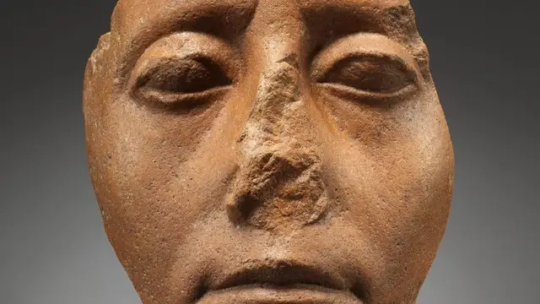

Why Do So Many Egyptian Statues Have Broken Noses?
The most common question that curator Edward Bleiberg fields from visitors to the Brooklyn Museum’s Egyptian art galleries is a straightforward but salient one: Why are the statues’ noses broken?
Bleiberg, who oversees the museum’s extensive holdings of Egyptian, Classical and ancient Near Eastern art, was surprised the first few times he heard this question. He had taken for granted that the sculptures were damaged; his training in Egyptology encouraged visualizing how a statue would look if it were still intact.
It might seem inevitable that after thousands of years, an ancient artifact would show wear and tear. But this simple observation led Bleiberg to uncover a widespread pattern of deliberate destruction, which pointed to a complex set of reasons why most works of Egyptian art came to be defaced in the first place.
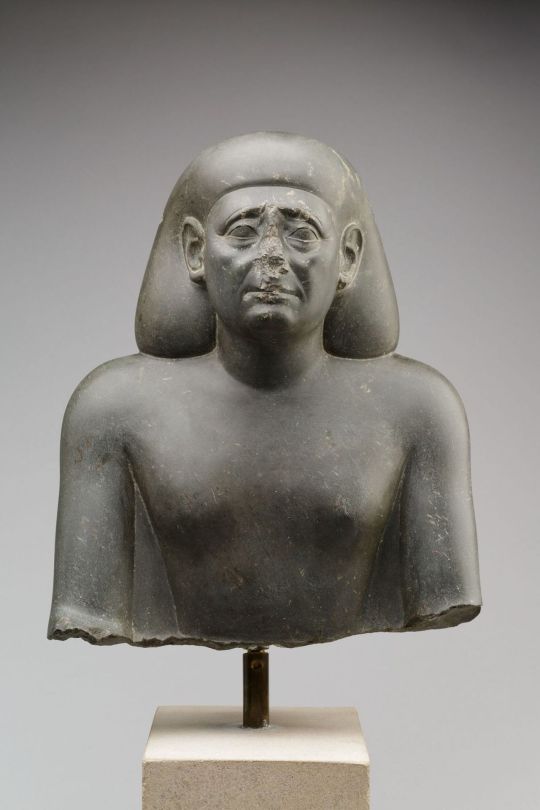
Bleiberg’s research is now the basis of the poignant exhibition “Striking Power: Iconoclasm in Ancient Egypt.” A selection of objects from the Brooklyn Museum’s collection will travel to the Pulitzer Arts Foundation later this month under the co-direction of the latter’s associate curator, Stephanie Weissberg. Pairing damaged statues and reliefs dating from the 25th century BC to the 1st century AD with intact counterparts, the show testifies to ancient Egyptian artifacts’ political and religious functions – and the entrenched culture of iconoclasm that led to their mutilation.
In our own era of reckoning with national monuments and other public displays of art, “Striking Power” adds a germane dimension to our understanding of one of the world’s oldest and longest-lasting civilizations, whose visual culture, for the most part, remained unchanged over millennia. This stylistic continuity reflects – and directly contributed to – the empire’s long stretches of stability. But invasions by outside forces, power struggles between dynastic rulers and other periods of upheaval left their scars.
“The consistency of the patterns where damage is found in sculpture suggests that it’s purposeful,” Bleiberg said, citing myriad political, religious, personal and criminal motivations for acts of vandalism. Discerning the difference between accidental damage and deliberate vandalism came down to recognizing such patterns. A protruding nose on a three-dimensional statue is easily broken, he conceded, but the plot thickens when flat reliefs also sport smashed noses.
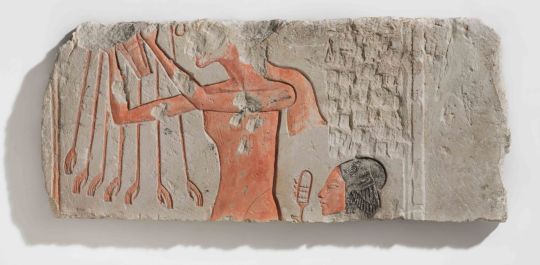
The ancient Egyptians, it’s important to note, ascribed important powers to images of the human form. They believed that the essence of a deity could inhabit an image of that deity, or, in the case of mere mortals, part of that deceased human being’s soul could inhabit a statue inscribed for that particular person. These campaigns of vandalism were therefore intended to “deactivate an image’s strength,” as Bleiberg put it.
Tombs and temples were the repositories for most sculptures and reliefs that had a ritual purpose. “All of them have to do with the economy of offerings to the supernatural,” Bleiberg said. In a tomb, they served to “feed” the deceased person in the next world with gifts of food from this one. In temples, representations of gods are shown receiving offerings from representations of kings, or other elites able to commission a statue.
“Egyptian state religion,” Bleiberg explained, was seen as “an arrangement where kings on Earth provide for the deity, and in return, the deity takes care of Egypt.” Statues and reliefs were “a meeting point between the supernatural and this world,” he said, only inhabited, or “revivified,” when the ritual is performed. And acts of iconoclasm could disrupt that power.
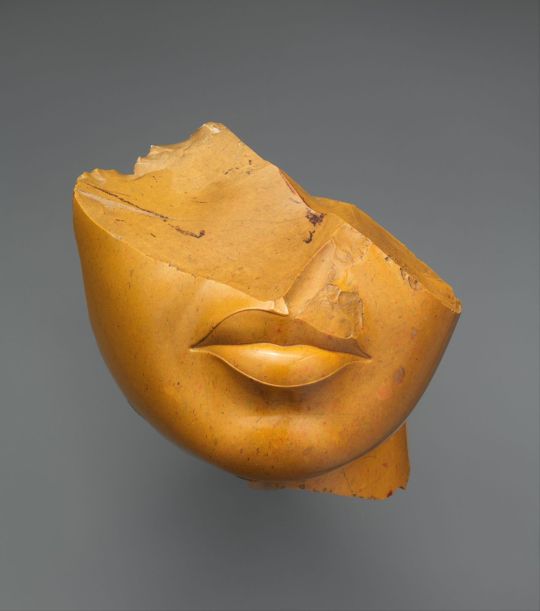
“The damaged part of the body is no longer able to do its job,” Bleiberg explained. Without a nose, the statue-spirit ceases to breathe, so that the vandal is effectively “killing” it. To hammer the ears off a statue of a god would make it unable to hear a prayer. In statues intended to show human beings making offerings to gods, the left arm – most commonly used to make offerings – is cut off so the statue’s function can’t be performed (the right hand is often found axed in statues receiving offerings).
“In the Pharaonic period, there was a clear understanding of what sculpture was supposed to do,” Bleiberg said. Even if a petty tomb robber was mostly interested in stealing the precious objects, he was also concerned that the deceased person might take revenge if his rendered likeness wasn’t mutilated.
The prevalent practice of damaging images of the human form – and the anxiety surrounding the desecration – dates to the beginnings of Egyptian history. Intentionally damaged mummies from the prehistoric period, for example, speak to a “very basic cultural belief that damaging the image damages the person represented,” Bleiberg said. Likewise, how-to hieroglyphics provided instructions for warriors about to enter battle: Make a wax effigy of the enemy, then destroy it. Series of texts describe the anxiety of your own image becoming damaged, and pharaohs regularly issued decrees with terrible punishments for anyone who would dare threaten their likeness.

Indeed, “iconoclasm on a grand scale…was primarily political in motive,” Bleiberg writes in the exhibition catalog for “Striking Power.” Defacing statues aided ambitious rulers (and would-be rulers) with rewriting history to their advantage. Over the centuries, this erasure often occurred along gendered lines: The legacies of two powerful Egyptian queens whose authority and mystique fuel the cultural imagination – Hatshepsut and Nefertiti – were largely erased from visual culture.
“Hatshepsut’s reign presented a problem for the legitimacy of Thutmose III’s successor, and Thutmose solved this problem by virtually eliminating all imagistic and inscribed memory of Hatshepsut,” Bleiberg writes. Nefertiti’s husband Akhenaten brought a rare stylistic shift to Egyptian art in the Amarna period (ca. 1353-36 BC) during his religious revolution. The successive rebellions wrought by his son Tutankhamun and his ilk included restoring the longtime worship of the god Amun; “the destruction of Akhenaten’s monuments was therefore thorough and effective,” Bleiberg writes. Yet Nefertiti and her daughters also suffered; these acts of iconoclasm have obscured many details of her reign.
Ancient Egyptians took measures to safeguard their sculptures. Statues were placed in niches in tombs or temples to protect them on three sides. They would be secured behind a wall, their eyes lined up with two holes, before which a priest would make his offering. “They did what they could,” Bleiberg said. “It really didn’t work that well.”

Speaking to the futility of such measures, Bleiberg appraised the skill evidenced by the iconoclasts. “They were not vandals,” he clarified. “They were not recklessly and randomly striking out works of art.” In fact, the targeted precision of their chisels suggests that they were skilled laborers, trained and hired for this exact purpose. “Often in the Pharaonic period,” Bleiberg said, “it’s really only the name of the person who is targeted, in the inscription. This means that the person doing the damage could read!”
The understanding of these statues changed over time as cultural mores shifted. In the early Christian period in Egypt, between the 1st and 3rd centuries AD, the indigenous gods inhabiting the sculptures were feared as pagan demons; to dismantle paganism, its ritual tools – especially statues making offerings – were attacked. After the Muslim invasion in the 7th century, scholars surmise, Egyptians had lost any fear of these ancient ritual objects. During this time, stone statues were regularly trimmed into rectangles and used as building blocks in construction projects.
“Ancient temples were somewhat seen as quarries,” Bleiberg said, noting that “when you walk around medieval Cairo, you can see a much more ancient Egyptian object built into a wall.”
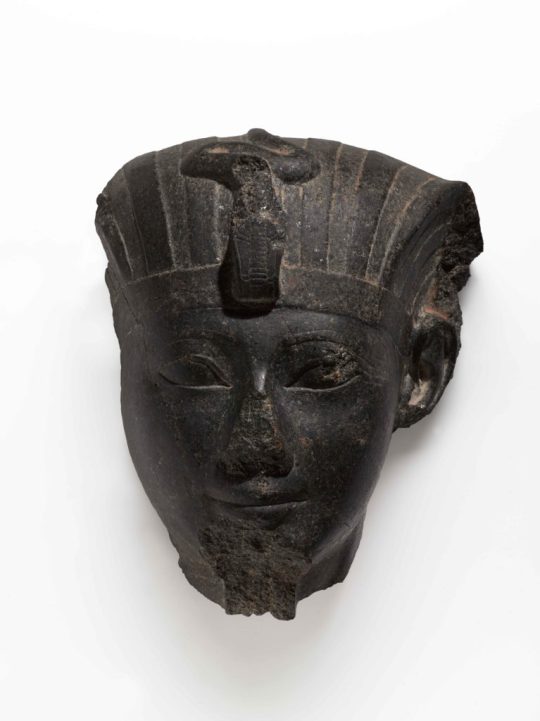
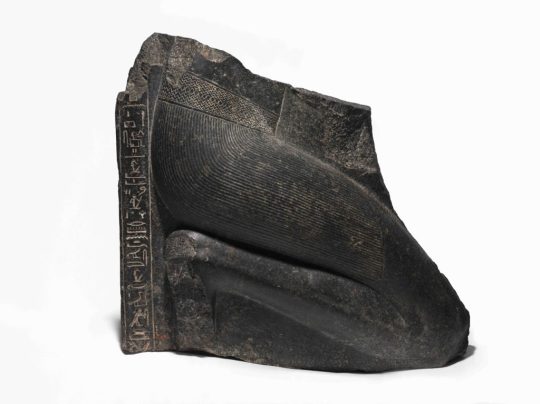
Such a practice seems especially outrageous to modern viewers, considering our appreciation of Egyptian artifacts as masterful works of fine art, but Bleiberg is quick to point out that “ancient Egyptians didn’t have a word for ‘art.’ They would have referred to these objects as ‘equipment.’” When we talk about these artifacts as works of art, he said, we de-contextualize them. Still, these ideas about the power of images are not peculiar to the ancient world, he observed, referring to our own age of questioning cultural patrimony and public monuments.
“Imagery in public space is a reflection of who has the power to tell the story of what happened and what should be remembered,” Bleiberg said. “We are witnessing the empowerment of many groups of people with different opinions of what the proper narrative is.” Perhaps we can learn from the pharaohs; how we choose to rewrite our national stories might just take a few acts of iconoclasm.
By Julia Wolkoff.

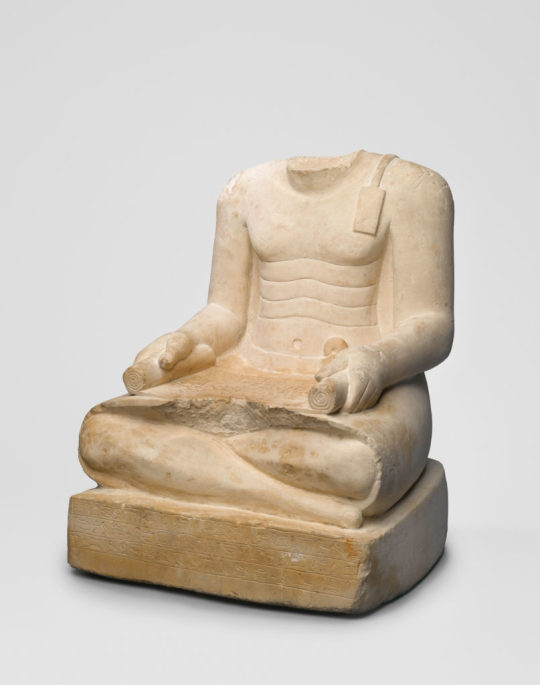
#Why Do So Many Egyptian Statues Have Broken Noses?#statues#egyptian sculpture#egyptian statues#ancient artifacts#archeology#archeolgst#history#history news#ancient history#ancient culture#ancient civilizations#ancient egypt#egyptian history#egyptian art#long reads
51 notes
·
View notes